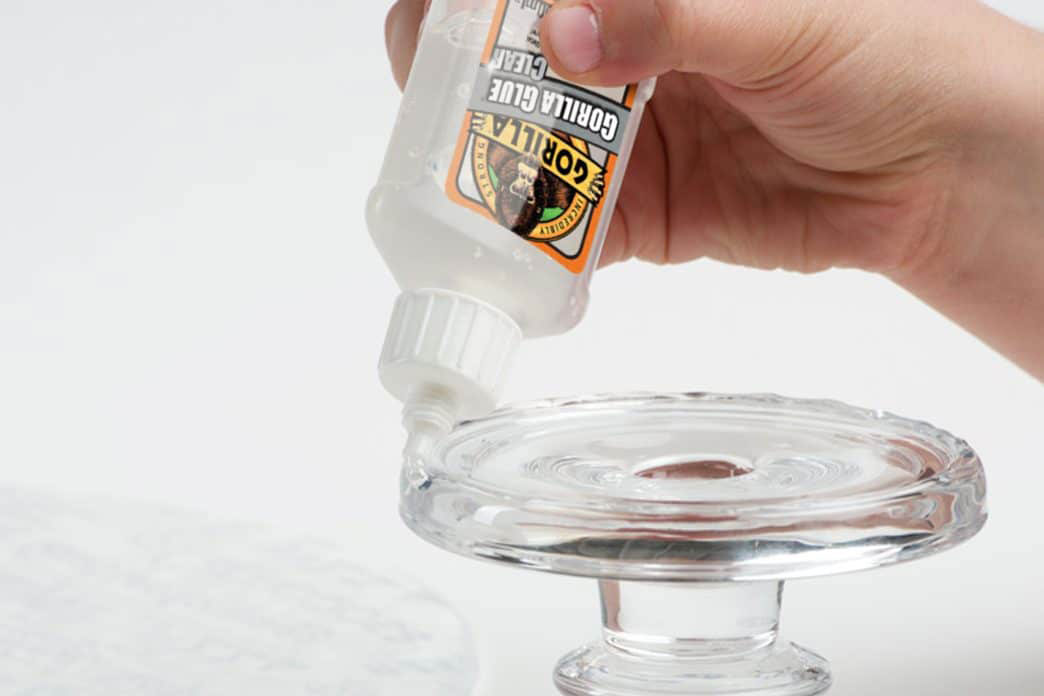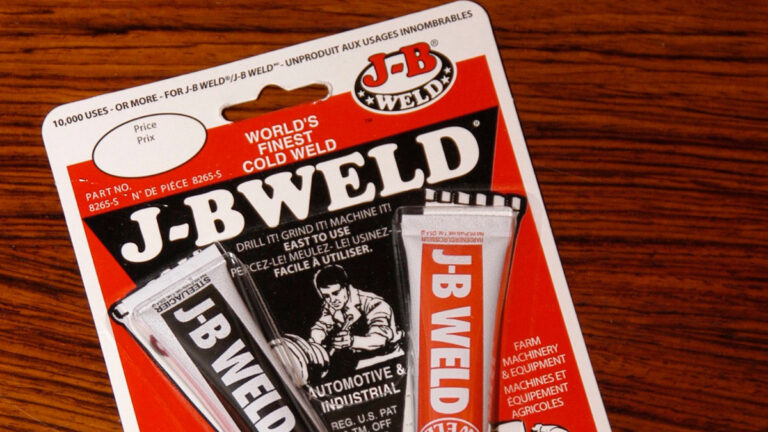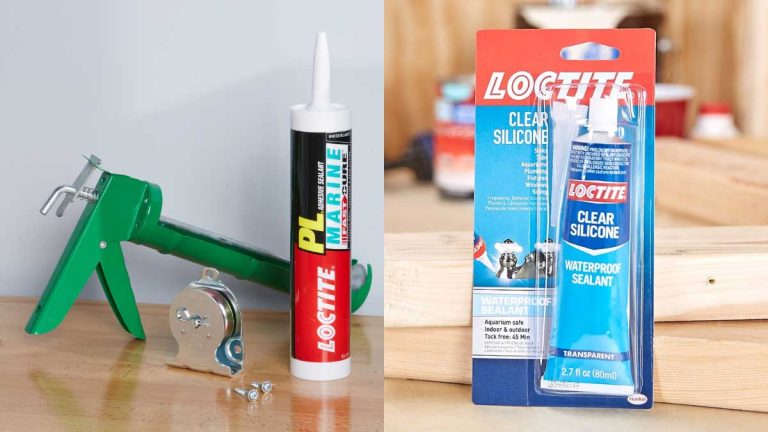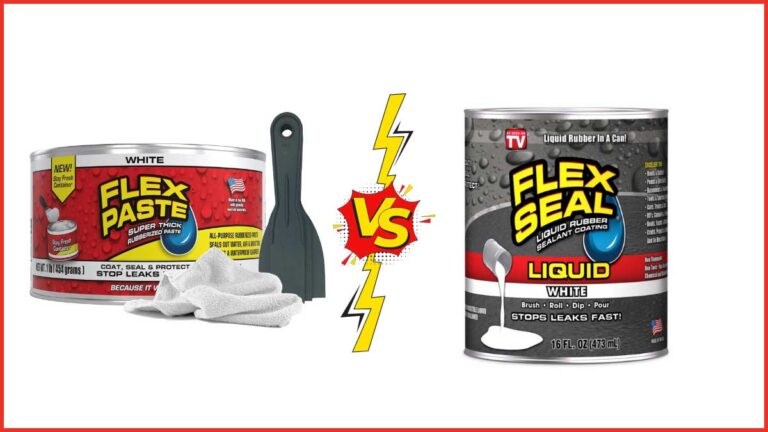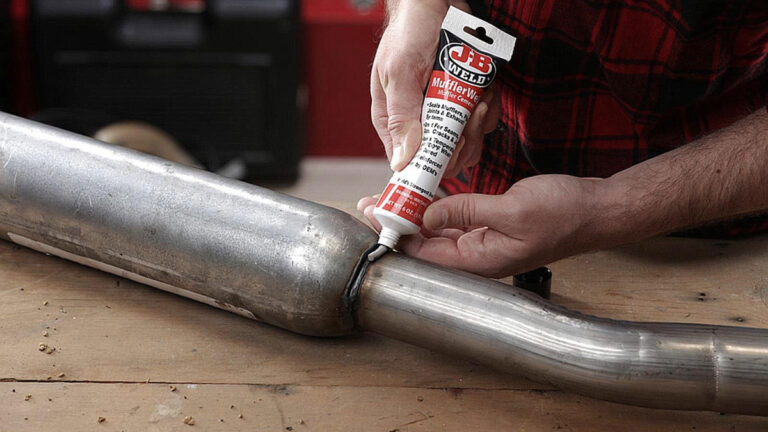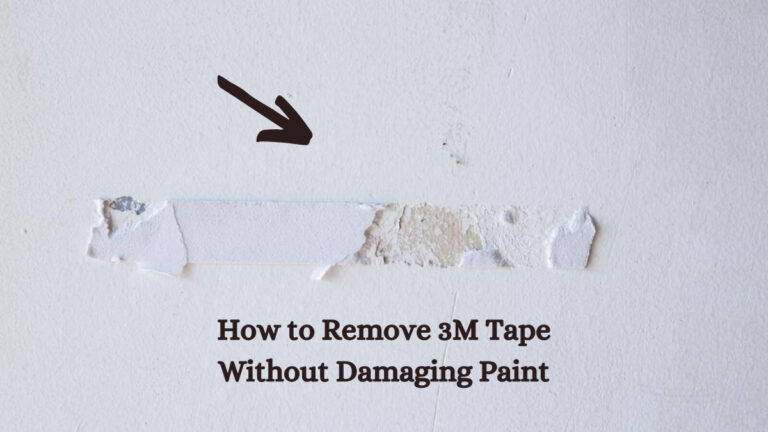What Adhesive Sticks to Glass: Top Choices for Best Results
When you’re working on a project that involves glass, choosing the right adhesive can make all the difference. Glass surfaces are notoriously tricky to bond, requiring specific types of adhesives that can handle their smooth, non-porous nature. Whether you’re repairing a broken window, crafting a decorative piece, or assembling a glass structure, knowing what adhesive sticks to glass is crucial.
You might think any glue will do the job, but using the wrong type can lead to weak bonds and frustration. In this text, you’ll discover the best adhesives for glass, ensuring your projects are durable and long-lasting. Get ready to transform your approach to glass bonding with these expert tips and recommendations.
Key Takeaways
- Selecting the Right Adhesive for Glass: Understanding the specific properties of adhesives like epoxy, UV curable, silicone, and structural acrylic helps ensure strong, durable bonds for various glass projects.
- Epoxy and UV Curable Adhesives: Epoxy adhesives provide strong bonds suitable for structural applications and can set quickly, while UV curable adhesives offer high optical clarity, fast curing times under UV light, and are ideal for applications requiring an invisible joint.
- Super Glue and Silicone Adhesives: Super Glue is best for temporary repairs due to its brittleness over time, whereas silicone adhesives offer flexibility and temperature resistance, making them suitable for non-structural applications like aquariums and decorations.
- Preparation and Application: Proper cleaning and surface preparation are essential to achieve strong bonds. Environmental conditions like temperature and humidity significantly impact the effectiveness of adhesive curing.
- Indoor vs. Outdoor Use: Choose adhesives based on the application environment. Indoor adhesives like Loctite Glass Glue and UV curable adhesives work well for household items, while outdoor adhesives like MS polymer provide weather resistance and durability.
- Comparing Adhesive Properties: Use data-rich tables to compare bond strength, cure time, flexibility, and best use cases, facilitating informed decision-making for specific glass bonding needs.
What Adhesive Sticks to Glass?
Selecting the right adhesive for glass projects ensures strong, durable bonds. Each adhesive type has unique properties and suitable applications. Here are the most effective adhesives for glass:
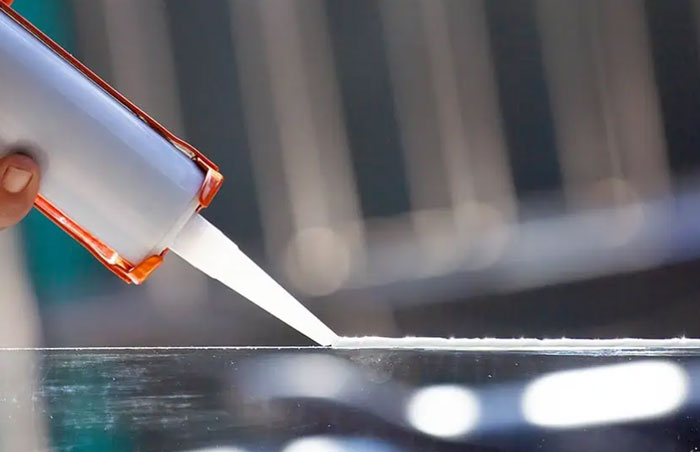
Epoxy Adhesives
Epoxy adhesives are ideal for bonding glass to glass or other materials such as metal. These adhesives form extremely strong bonds and can set in as little as five minutes. Here are their key features:
- Two-Part System: Requires mixing but offers strong adhesion
- Pre-Mixed Versions: Available for convenience
- Clear Drying: Essential to avoid unsightly residue
UV Curable Adhesives
UV curable adhesives are preferred for high optical clarity and resistance to yellowing. These adhesives cure rapidly under UV or visible light, making them suitable for applications that need invisible joints:
- High Optical Clarity: Ideal for invisible joints
- Fast Curing: Cures quickly under UV or visible light
- Versatile Applications: Bonds glass to glass, glass to metal, and other substrates
| Adhesive Type | Key Feature | Typical Applications | Setting Time |
|---|---|---|---|
| Epoxy Adhesives | Strong bonds, dries clear | Glass to glass, glass to metal | As little as 5 mins |
| UV Curable Adhesives | High optical clarity, rapid cure | Glass to glass, glass to other materials | Rapid under UV/visible light |
Understanding the properties of each adhesive helps you choose the right product for your glass bonding needs. For instance, if high optical clarity and resistance to yellowing are essential, UV curable adhesives are perfect. If you need a strong bond within minutes, epoxies are optimal. This ensures durable and aesthetically pleasing results in your glass projects.
Types of Adhesives for Glass
When it comes to bonding glass, the right adhesive is crucial for ensuring long-lasting results. Here’s a look at various adhesives suitable for glass, each offering unique benefits and applications.
Super Glue
- Characteristics: Super Glue, or cyanoacrylate, cures rapidly. But, it can become brittle over time, making it less ideal for permanent bonds.
- Use: Best for temporary fixes rather than permanent applications.
Epoxy Adhesive
- Characteristics: Epoxy adhesives provide strong bonds and are available in one and two-component forms. Two-component epoxies require mixing but offer higher strength and durability.
- Use: Suitable for bonding glass to glass, metal, and other materials, making it ideal for structural applications.
Silicone Adhesive
- Characteristics: Silicone adhesives offer flexibility and resistance to temperature variations. They remain clear over time but take longer to cure.
- Use: Ideal for non-structural applications like aquariums, glass decorations, and glass-to-metal bonds.
UV Curable Glass Glue
- Characteristics: UV curable adhesives cure quickly under UV light and provide high optical clarity. They are perfect when an invisible bond is necessary.
- Use: Suitable for applications like glass tables, display cases, and other projects where aesthetic finish is crucial.
Structural Acrylic Adhesives
- Characteristics: These adhesives offer a balance between strength, quick cure time, and durability. They can bond glass to a range of other materials.
- Use: Best for structural applications requiring robust, long-lasting bonds.
MS Polymer Glass Glue
- Characteristics: MS Polymer adhesives provide strong, elastic bonds and excellent weather resistance without the need for primers.
- Use: Effective for outdoor applications and in conditions requiring flexibility and durability, such as sealing glass windows and panels.
Adhesive Comparison Table
Here’s a comparison of different adhesives for glass based on key attributes:
| Adhesive Type | Bond Strength | Cure Time | Flexibility | Best Use Cases |
|---|---|---|---|---|
| Super Glue (Cyanoacrylate) | Moderate | Very Fast (seconds) | Low | Temporary fixes |
| Epoxy | High | Moderate (minutes) | Moderate | Structural applications, glass to metal |
| Silicone | Moderate | Slow (hours to days) | High | Aquariums, glass-to-metal, decorations |
| UV Curable Glass Glue | High | Very Fast (under UV) | Low | Glass tables, display cases, aesthetic projects |
| Structural Acrylic | High | Fast (minutes) | Moderate | Structural applications, multi-material bonding |
| MS Polymer | High | Moderate (hours) | High | Outdoor applications, flexible joints, window sealing |
Understanding these adhesive characteristics helps you make informed decisions for your glass projects, ensuring optimal results whether you’re fixing, creating, or building.
How to Glue Glass
Selecting the right adhesive is essential for successful glass projects. This guide details the best practices and adhesives for various glass bonding scenarios.
Glass to Wood
Glass to wood bonding presents unique challenges due to the different properties of the materials. Various adhesives, such as specialized glass glue, offer the best solutions.
- Silicone Adhesive: Ideal for flexibility and resistant to temperature changes.
- Two-Part Epoxy: Provides strong bonds for permanent fixtures.
Glass to Glass
Glass to glass applications demand high bond strength and often optical clarity. Here are some options:
- Loctite Glass Glue: Bonds quickly, clear finish.
- UV Curable Adhesives: Offer superior clarity and durability under UV light.
Glass to Metal
Metal has different expansion coefficients, so specific adhesives work better.
- Two-Part Epoxy: Offers strong adhesion and durability.
- Specialized Glass Glue: Works well with non-porous surfaces like metal.
Small Projects and Repairs
For minor fixes, quick-setting glues are preferred:
- Super Glue (Cyanoacrylate): Suited for temporary repairs.
- Silicone Adhesives: Provide flexibility and durability.
Delicate Glassware
Handling fragile items like glassware requires care and suitable adhesives:
- UV Curable Adhesives: Ensure high optical clarity.
- Specialized Glass Glue: Prevents breakage with strong bonds.
Large Projects
Larger glass projects necessitate robust adhesive solutions:
- Structural Acrylic Adhesives: Balance strength and quick cure times.
- MS Polymer Adhesives: Suitable for outdoor applications and strong holds.
| Adhesive Type | Bond Strength | Cure Time | Best Use Cases |
|---|---|---|---|
| Loctite Glass Glue | Moderate | Fast | Glass to glass, non-porous materials |
| Two-Part Epoxy | High | 5 minutes | Glass to glass, glass to metal, durable |
| UV Curable Adhesives | High | UV dependent | High optical clarity, delicate glassware |
| Super Glue (Cyanoacrylate) | Low-Moderate | Fast | Small repairs, temporary fixes |
| Silicone Adhesives | Moderate | Varies | Glass to wood, small repairs, flexible |
| Structural Acrylic | High | Moderate | Large projects, quick cure |
| MS Polymer Adhesives | High | Moderate | Outdoor applications |
Ensuring the durability and success of your glass projects hinges on selecting the correct adhesive tailored to the specific materials and project scale involved.
Preparing Glass for Adhesive Application
Proper preparation is essential for achieving a strong, durable bond when applying adhesive to glass. This process involves cleaning, surface treatment, and ensuring the correct environmental conditions.
Cleaning the Glass Surface
Achieving a clean surface is critical. Any dust, grease, or residue can weaken the bond.
- Use isopropyl alcohol: Apply with a lint-free cloth to remove contaminants.
- Warm soapy water: Effective for general cleaning; rinse thoroughly.
- Avoid abrasive cleaners: These can scratch the glass, reducing adhesion.
Surface Treatment
Pre-treating the glass surface enhances adhesive performance.
- Sandblasting: Creates micro-roughness for better mechanical bonding.
- Primers: Apply a suitable primer to improve adhesion, especially when bonding dissimilar materials, such as glass to metal.
Ensuring Optimal Environmental Conditions
Environmental conditions play a crucial role in the bonding process.
- Temperature: Ideal bonding occurs between 50°F to 77°F. Colder or hotter conditions can affect adhesive curing.
- Humidity: Maintain a relative humidity around 40%-60%. Excess moisture can interfere with certain adhesives, such as UV curable adhesives.
Common Adhesives for Glass Bonding
Understanding adhesive options helps select the best type for specific needs.
UV Curable Adhesives
- Panacol’s Vitralit®: Cures under UV/visible light, high strength, minimal shrinkage.
- Permabond UV Curable Adhesives: Structural strength, optical clarity, yellowing resistance.
Epoxies
- Loctite Epoxies: Two-part systems, effective for glass-to-glass or glass-to-metal.
- Permabond Epoxies: Also two-part, offer strong bonds, available in pre-mixed versions.
Quick Reference Table
| Adhesive | Bond Strength | Cure Time | Best Use Cases |
|---|---|---|---|
| Panacol’s Vitralit® | High | Fast (UV) | Glass to glass, glass to metal |
| Permabond UV Adhesives | High | Fast (UV) | Display cases, glass furniture |
| Loctite Epoxies | Very High | Moderate | Structural bonding, repairs |
| Permabond Epoxies | Very High | Moderate | Industrial applications |
Steps for Applying Adhesive to Glass
Following a systematic approach ensures optimal results.
- Clean the glass surface: Use isopropyl alcohol or warm soapy water.
- Apply primer or surface treatment: If required, based on adhesive type.
- Dispense adhesive: Using the recommended amount for the specific adhesive.
- Assemble parts: Align and hold pieces together until curing begins.
- Cure according to adhesive specifications: Follow manufacturer’s guidelines for temperature, UV exposure (for UV adhesives), or setting time.
Proper preparation of the glass surface, selecting the suitable adhesive, and applying the adhesive correctly are crucial steps for successful glass bonding.
Key Considerations for Choosing Glass Glue
Choosing the right adhesive for glass projects ensures strong, lasting bonds. When selecting glass glue, consider these critical factors.
Indoor vs. Outdoor Use
- Indoor Use: Indoors, adhesives like epoxies, UV-curable adhesives, and Loctite Glass Glue work well. These adhesives offer strong bonds suitable for household and decorative items.
- Outdoor Use: Outdoors, adhesives must withstand weather conditions. UV-curable adhesives and specific epoxies provide high strength and resistance to moisture and temperature changes.
Drying Time
- Fast Drying: UV-curable adhesives cure quickly under UV light, often within seconds. These are ideal for projects where immediate handling is necessary.
Waterproof Properties
- Waterproof Adhesives: For projects exposed to moisture, select adhesives with waterproof properties. Marine epoxies and certain silicone adhesives offer excellent moisture resistance.
Bond Strength
- High Bond Strength: Epoxies and structural acrylic adhesives provide strong, durable bonds. These are suitable for load-bearing applications and critical repairs.
Temperature Resistance
- Temperature-Tolerant Adhesives: For applications subject to temperature variations, use adhesives like certain epoxies and silicone, which can withstand a wide range of temperatures without degrading.
Application Tips
- Surface Preparation: Clean the glass surface with isopropyl alcohol or warm soapy water. Avoid abrasive cleaners.
- Optimal Conditions: Ensure proper environmental conditions during application, such as appropriate temperature and humidity levels.
- Apply Evenly: Spread the adhesive evenly to avoid air bubbles and ensure maximum contact.
Data-Rich Comparison Table
To summarize the key properties of various adhesives suitable for glass, refer to the table below.
| Adhesive Type | Bond Strength | Cure Time | Waterproof | Temperature Resistance | Best Use Case |
|---|---|---|---|---|---|
| Epoxy | High | 5-20 minutes | Yes | -50°C to 150°C | Load-bearing repairs |
| UV-Curable Adhesives | Medium-High | Seconds | No | -40°C to 120°C | Quick bonding, invisible joints |
| Loctite Glass Glue | Medium | 1-2 hours | Yes | -40°C to 80°C | Household, decorative items |
| Silicone | Medium | 24 hours | Yes | -60°C to 180°C | Outdoor applications, flexibility |
| Structural Acrylic | High | 10-15 minutes | No | -40°C to 100°C | Strong structural bonding |
| MS Polymer Adhesives | High | 24-48 hours | Yes | -40°C to 100°C | Outdoor applications, large projects |
Ensure you consider these factors to select the right adhesive for your glass projects.
Conclusion
Choosing the right adhesive for your glass projects is crucial for achieving strong and durable bonds. By understanding the specific properties and best use cases of various adhesives, you can ensure your glass items are securely and aesthetically bonded. Remember to prepare your surfaces properly and consider environmental conditions to maximize the effectiveness of the adhesive. With the right approach, your glass projects will not only be durable but also visually appealing.
Frequently Asked Questions
What are the challenges of gluing glass?
The main challenge is glass’s smooth, non-porous surface, which makes it difficult for adhesives to form strong bonds.
Which adhesive is best for bonding glass to glass?
Loctite Glass Glue and UV curable adhesives are excellent choices, providing strong bonds and high optical clarity.
What type of adhesive is suitable for outdoor glass projects?
MS Polymer adhesives are ideal for outdoor applications due to their durability and temperature resistance.
How do you prepare glass for adhesive application?
Clean the glass with isopropyl alcohol or soapy water, dry completely, and avoid abrasive cleaners. Use surface treatments like sandblasting or primers to enhance adhesion.
Can I use Super Glue for glass projects?
Yes, but it’s best for temporary fixes and smaller projects. For a stronger, long-lasting bond, consider using epoxy or structural acrylic adhesives.
What is the difference between epoxy and UV curable adhesives for glass?
Epoxy adhesives offer strong bonds and quick setting times. UV curable adhesives provide high optical clarity and cure rapidly under UV light, making them ideal for invisible joints.
Which adhesive is best for bonding glass to wood?
Two-part epoxy and silicone adhesives are recommended for strong, flexible bonds between glass and wood.
How important is temperature and humidity during the bonding process?
Maintaining appropriate temperature and humidity levels is critical for optimal adhesive performance and achieving a strong bond.
What factors should I consider when choosing glass glue?
Consider indoor vs. outdoor use, drying time, waterproof properties, bond strength, and temperature resistance.
What adhesives can be used for delicate glassware?
Quick-setting glues and UV curable adhesives are suitable for fragile items due to their strong, clear bonds and rapid curing times.

